Slash Film Fest Interview: Bill Watterson Rolls Out the Blueprint of DAVE MADE A MAZE
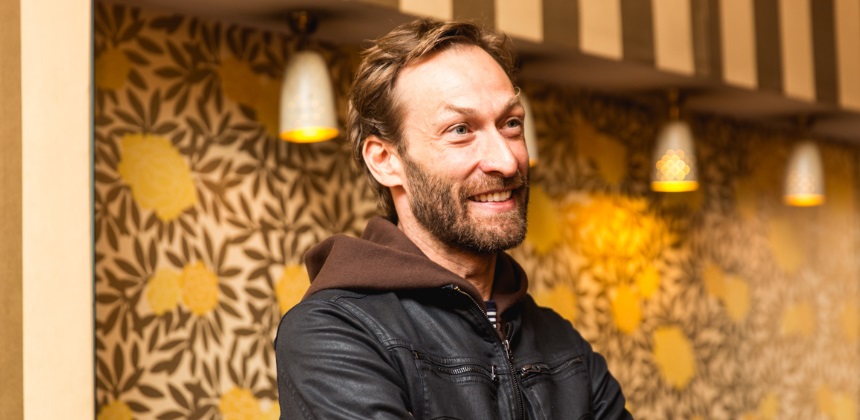
It’s rare for a fresh voice to arrive fully articulate, and it’s all the more special when it gets heard because the strength of a movie’s central concept resonates with so many. As far as filmmaking goes, striking gold with little means is no easy feat, but Dave Made a Maze defies the odds, erects a labyrinth in an apartment and takes viewers on an adventure – both humorous and dark – into an interior world that’s externalized through cardboard cutouts: “it’s much bigger on the inside” indeed. This is low-budget high concept pulled off with admirable skill.
On a Monday afternoon in Vienna we simply had to pick writer-director Bill Watterson’s brain about an indie debut whose momentum shows no signs of letting up. [Most of the interview is spoiler-free. Whenever an answer gives away crucial plot points a spoiler warning precedes it]
ScreenAnarchy: What started at Slamdance has gradually become a global phenomenon with Dave Made a Maze popping up in different countries and especially thriving in the warm embrace of the international genre circuit. On Saturday you found out your film won the audience award at the Strasbourg European Fantastic Film Festival and yesterday we witnessed the incredible reception of your film during the Austrian premiere. How has your weekend been?
Bill Watterson: I have to be honest, I’m drained. I find it very emotional. It’s an emotional thing to share something you’ve worked so hard on. There’s nerves every time. You don’t know how it’s gonna be received, whether anyone is gonna be there. All these festivals have such incredible programming; even myself, I can barely get to the things I wanna see. I either end up being too tired or too enamored of the city [Laughs]. You worry that your film’s gonna be the victim of the same or that even when people are there, that doesn’t mean it’s going to land for them. It doesn’t mean they’re gonna like it. It’s a very specific, very strange film that I’m incredibly proud of but you also run the risk of it not being someone’s cup of tea.
Would you ever have guessed your film could spark such a response back when you were working out the script with your cowriter, Steven Sears?
At that point we were just focused on ‘How can we make this?’ Because it is a fantasy world, it is very ambitious. It was an entire world that needed to be built but we were doing it for almost nothing so, a lot of the times it was just thinking more practically in terms of ‘How can we physically get this made? Who can we get attached? Who will make this with us?’ But of course also ‘Is this fun? Are we saying enough? What’s the theme?’ That’s where our minds were at all times. The endgame was just honoring the story and that was true on set as well.
As a director I was just trying to tell a story and then once we got in Slamdance then everything became real. And suddenly we had to finish a film. We had shot a film, someone had responded to it, and we had to finish it in a very short amount of time. Once again, that keeps you very present. But I will say, because there was a big lag between when we finished principal photography and when we were able to really dig into the edit, I was able to sit with the footage a lot, and sit with the rough cut for many months, which is both a blessing and a curse.
But there were stages during that phase where I was just starting to become aware of how visually compelling it is. Beyond the story, beyond the performances, beyond just sort of that sense of accomplishment and sense of wonder at what we did with so little. And then rediscovering small moments and laughing all over again, becoming really enamored with things that the actors had done that I never pictured; the life they brought to it.
I was able to start to say ‘Ok, this has a chance internationally because it is so visual’. It’s a silly thing to say about a film because of course it’s visual but … I think I’ve used this phrase before: the frame is pretty packed. There’s always something to look at. Even if you’re not necessarily engaged in what might be a particularly western comedic riff, the silent characters are fascinating because they’re such gifted physical performers. Everyone was present and committed at all times so you can drift away from the story and the dialog and still be engaged, which I thought was to our advantage when it came to other countries and other languages.
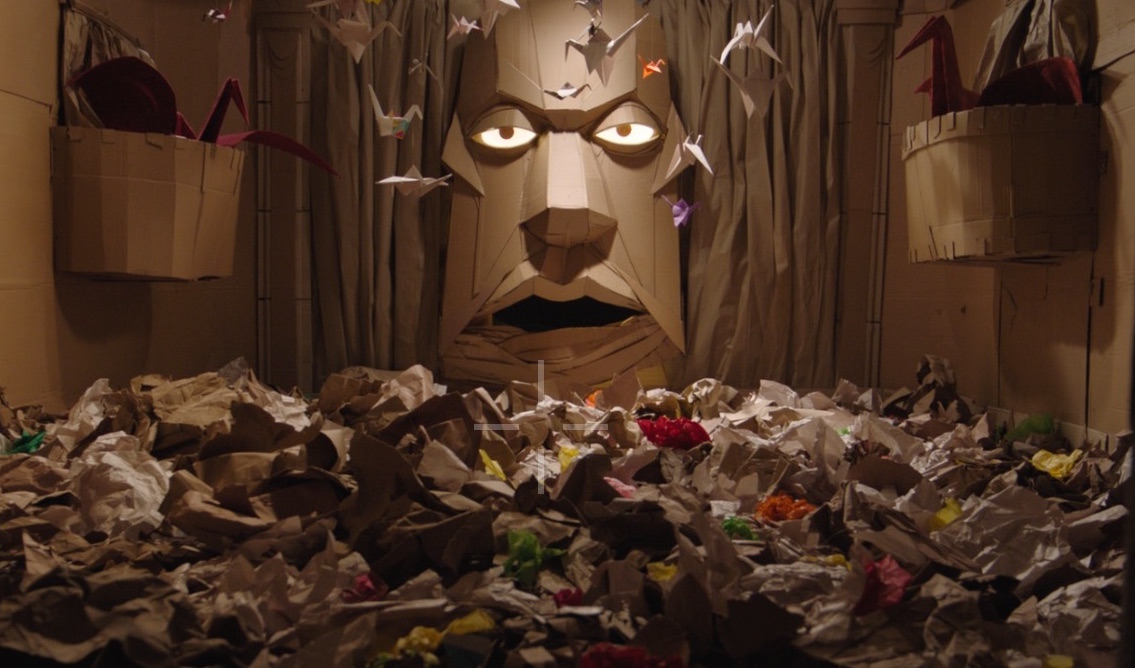
Because of the look and feel of the film – the visually appealing surface – you’ll always have an angle that translates well internationally and if people are able to read more into it then …
Bonus [Laughs]! But then, also once we got deeper into the sound design and the score, also things that don’t rely on language: a great song is a great song, a great beat is a great beat, and a creepy sound effect is a creepy sound effect in any country. Once those got polished, amplified and mixed, that’s when I really thought ‘This has a chance’.
How important were soundtrack and sound design to create an immersive experience and really make it feel like a world that you could literally step into?
More than I ever could have realized. Even in the script there were vague references to the way sounds change in the maze and things like that. I used to be in a band with the Mondo Boys, who provide the score, so I knew what they were capable of, which I was very excited about. In early drafts of the script in the closing scene we said we wanted the song “Pinball” from them. We would cue it when we’d read the script to each other, sort of performing it to see if it made sense and held water. We’d cue that song, get to the end of the script and play that song as it builds and swells, so we were thinking about music and particularly those guys from very early on. […]
Even with our temp score and sound design we did a very good job to get the movie where it needed to be, for everyone to understand what we’re going for, but it’s unwatchable for me now.
Interesting you should bring that up because I’ve also seen the film with the temp score. Whereas now Dave Made a Maze builds to a rousing climax with “Pinball” the earlier screener actually ended on a song that many would instantly associate with the final scene of Eternal Sunshine of the Spotless Mind. I don’t know if that placeholder was a coincidence but to me the entire film has a strong Michel Gondry vibe to it.
We’ve used a lot of temp score from some strange places, a lot of Jon Brion and stuff like that. And I’m almost sure there was something from Eternal Sunshine in there because he does melancholy so well and the climax is a very melancholy moment [edited for spoilers]. It’s sort of a nothing gold can stay moment. That’s something Gondry and many European directors do so well. A lot of Americans do ‘dark’ really well, they do ‘sad’ but melancholy that has the good and the bad in it simultaneously, it’s not one of our strengths.
I’m a musician myself so I could talk music for days to come. Things like ‘Dave’s Theme’, for instance. His fatal flaw is he never completes anything, so his theme is a melodic riff that never resolves because it keeps getting interrupted, either by a cut or someone interrupting him when he’s trying to talk or as the theme swells under him. It isn’t until the very end that the melody of his theme is fully resolved; little things like that you’d only probably know if you’d read an interview. But I think you feel them and they help build the world. They can become very emotional.
Annie [Dave’s girlfriend] has a beautiful theme that is a melody that turns into a march when she’s [made up her mind about the right course of action; edited for spoilers]. When there’s a particularly emotional, surreal moment we played it in reverse. So it’s still Annie’s theme but it’s warped. The maze is having its way. Those are the kinds of things that no one is going to pick up on in a first, second, third or maybe even fourth viewing but they matter. And the same can be said for all of the sound design. The first time our sound designer, Ugo [Derouard], and I were at his sound stage and he played me the scene where they enter the maze and their voices are echoing [Laughs] … I mean, our sets were ten to fifteen feet long, but you put an echo on someone’s voice, and you film it with the right lens and your hallways are suddenly two hundred, three hundred yards long.
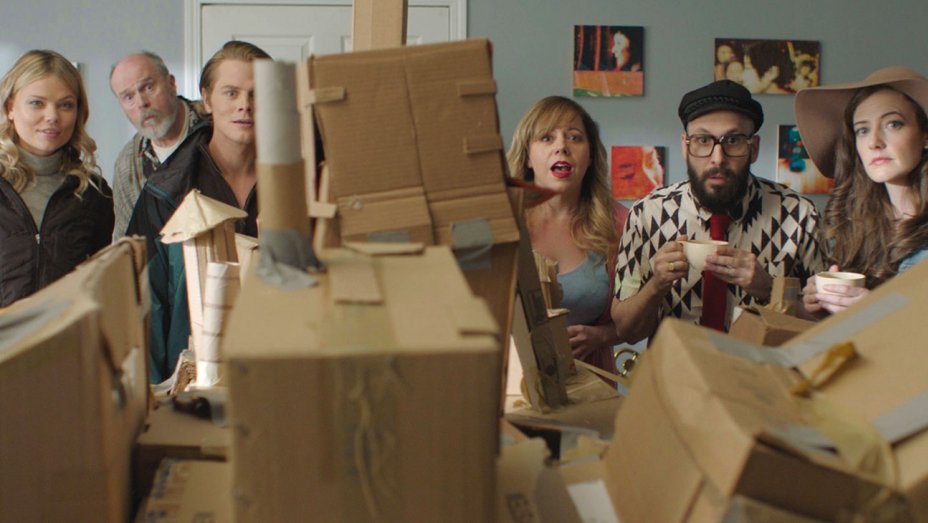
It really creates a sense of scale and makes the maze feel like a vibrant world they’re stepping into.
Yeah, 100%! Each room had its own room tone, affected their voices differently, so you’re not flat lining. You’re not plateauing but always going somewhere new. The movie’s not going to work if you don’t feel like it’s a journey. The soundscape added color to every moment. Of course you’d have to tip your hat to the art directors and production designers because the maze, it’s the main character, but amplifying that every step of the way with new voices, new sounds, new background voices … Ugo did this amazing thing where you hear whispers here and there, so you never feel like they’re alone or quite safe. […] It makes you wonder what’s behind these walls, what’s under these floors.
You get the sense that they explore only a very small segment and that there is even a much bigger world left in there to explore.
There’s a moment where Dave and co are cutting towards the center using the katana sword, and we just didn’t have physical space to make it seem like that was a long enough journey, so we were trying to figure out ways how we could pull that off. At one point we were talking about maybe shooting a miniature and comping it with a green screen shot and all this other stuff but finally, well within post-production, we came up with the idea of just showing a series of the sword hitting all these walls. Let’s hit some of our familiar walls – like you’ll see the piano box come back and all these other things – but then let’s show these new walls of other spaces.
There’s an underwater one, there’s a planetarium one … At one point the sword hits and it doesn’t go through but stretches into the wall because it’s a new ‘stretchy-material room’ [Laughs] or whatever you wanna call it. They’re quick flashes so, again, it’s subtle but there’s that sense of ‘There are all these other spaces they could’ve gone.’ Even when the boom operator sneaks back in at one point, he’s like ‘I thought I could just slide back in there but I got lost for a second’. Where did he go? That could be its own movie: what happened to the boom op?
And the way we used Leonard’s (Scott Krinsky) coming late to the game (he’s always ten steps behind) and following them … When you cut to that and then cut back to Dave and co there’s a sense that they could’ve been in ten other rooms while we were with Leonard. We had such limited space, such limitations. There’s only so much you can do with the lens or make it seem like a room turns a corner into darkness and that could go on forever. They did everything they could with that, and I couldn’t be prouder but the sound design, the score, the pacing of using Leonard’s journey increases the scale.
That’s the magic of playing in the medium: we had twenty feet and we made you think we had miles.
It’s pretty remarkable that you shot it in a very small space. I wouldn’t be surprised if some viewers got the impression that you built the maze in a factory or something.
I wish! But no, we never had enough space to have one room connect into another, so there was only one room up at a time, which I was concerned about because when we were writing the script we had pictured more walk-and-talks, coming around a corner and even wondering if there was gonna be a budget for Steadicam. But it was pretty clear early on that we would never have that physical space.
What we did have was, on the one hand, a continuity nightmare because you had to always track what direction the characters were leaving, what order they were leaving a room in because it was gonna be six or seven days before we would shoot them walking into the next room. So we constantly had to keep track of that. On the other hand, they’re wandering through a maze that can go on forever so it doesn’t really matter but we did lock it down, just in case and for our own sake.
There’s advantages to having a film that’s very modular in terms of your edit. You’re not necessarily locked in in terms of additional ideas. We were able to add a scene and slot it in between one room and the next because it is so modular. But at the same time there was a concern that it wouldn’t feel fluent. That it would feel like they’d walk into a room, walk out, walk into the next room … I do remember feeling my limitations as a first-time director at one point thinking ‘all I’m doing is shooting them walking in and out of each room’. But in the edit we picked our moments. […] How do you keep it moving? How do you make something that is so modular not feel like train cars but how does it feel more like a river?
Where did the idea for Dave Made a Maze come from? Was it a literal take on ‘great things have small beginnings’? Or did the theme really get the ball rolling?
I actually think that the theme came later. In fact I know Steven, the cowriter who really put the clay on the wheel and built the world, has said he doesn’t write from that kind of a place. He just opens floodgates and sees what happens. But I, both as a writer and certainly if it’s something I was going to direct, I needed to be able to see what we were trying to say. What is it about? In very simple terms and then start filtering choices through that. That was very much my role as a cowriter: ‘This is fun but is it random or is there a reason?’ ‘There’s something here but how do we connect it?’
A lot of things didn’t need to be justified. I needed my own justification for the work that I need to do. But other things needed lining up, they needed to come from somewhere. A lot of it was going back to the opening credit sequence: ‘ok, everything we see in the maze, let’s see it in the apartment; let’s see the keyboard, let’s see a buzz saw, this painting of a close-up of an eye; let’s see origami’. It’s fairly narrative for an opening credit sequence but you don’t have to track all of that. It’s similar to what we were talking about with the score. You don’t need to know that, but you’ll feel it.
Just that concept of ‘it’s bigger on the inside’ worked on so many levels. I think it was inspired by an anecdote that I mentioned after the screening: my mother thinking I was lost inside of a fort that I had built, which is crazy-talk but it’s also kind of the mission statement. We say it very early on in the movie and that’s kind of all the explanation you get. It’s magical realism. You’re on board or you’re not. There are people who are not on board and that’s fine. They wanna know, but ‘how is it bigger on the inside? Is it ’cause there’s an Egyptian amulet buried in the parking lot?’ They want an engine, a logical explanation. But our launching point was simply ‘Dave said it, so it’s true’. And that saved us from a making a movie about things we weren’t interested in: physics, alternate dimensions and so forth.
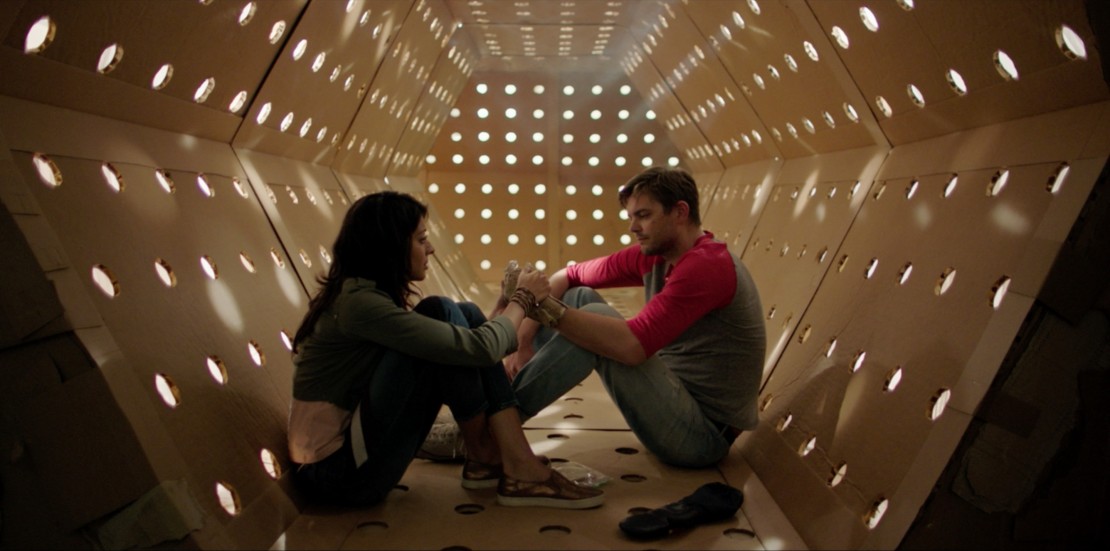
It seems like a small fort in the apartment and then it opens up, which can also be said of Dave.
Yeah! Maybe at first he seems like a flake, a guy who doesn’t have potential. None of that is true. You see over the course of the film that, actually, he is incredibly gifted and even though we scoff at it – ‘what’s driving it? My imagination’ – it wouldn’t exist without him. He does have the power of creativity. Also the film itself could be seen as very fluffy, very silly on the surface but … I mean, there’s a review that said we made a film that’s much bigger on the inside and I think that’s very true. There’s a lot going on, if you want to engage.
Instead of hitting viewers over the head with a single interpretation, you encourage them to make the film their own. For me the labyrinth is a manifestation of Dave’s subconscious fears and the exploration of it is Dave coming face-to-face with personal issues and relationship problems as well. It’s dark but ultimately hopeful in that Dave Made a Maze seems to suggest that even if you end up incarcerating yourself in a prison of your own making we are not necessarily prisoners of fate. Would you agree that it’s an uplifting narrative?
[Spoilers below]
I think so, yes. I mean, they get out, and they get out together. That’s the only way they were going to get it. The core of the movie is the Dave and Annie relationship and the emotional climax of the film is seeing them fall in love again because all of these things have gotten in the way of that. And once they get back to that place of just being together and being in love, seeing each for who they are and remembering how much they like what they’re seeing, that’s when the escape begins, that’s when safety becomes a reality again. In that regard I think it’s very hopeful. It’s a relationship that could have gone one way or the other but they staid grounded, they looked in each other’s eyes and said ‘no, we’re gonna make it’.
We did shoot some of the melancholic music in sifting through the destruction and we did shoot that closing sequence much like a funeral because even though I always thought he’s changed for the better, he’s matured, I’ve always felt that change is hard; change is painful, even positive change. So there’s a price to be paid. There’s a price to be paid to be a creative person. There’s a price to be paid to make a relationship work. There’s a price to be paid to maintaining your friendship. Everything comes at a cost. I don’t say that because I pity the poor artist, you know. It’s a gift to be able to create; that is a gift from somewhere but it doesn’t come without a price.
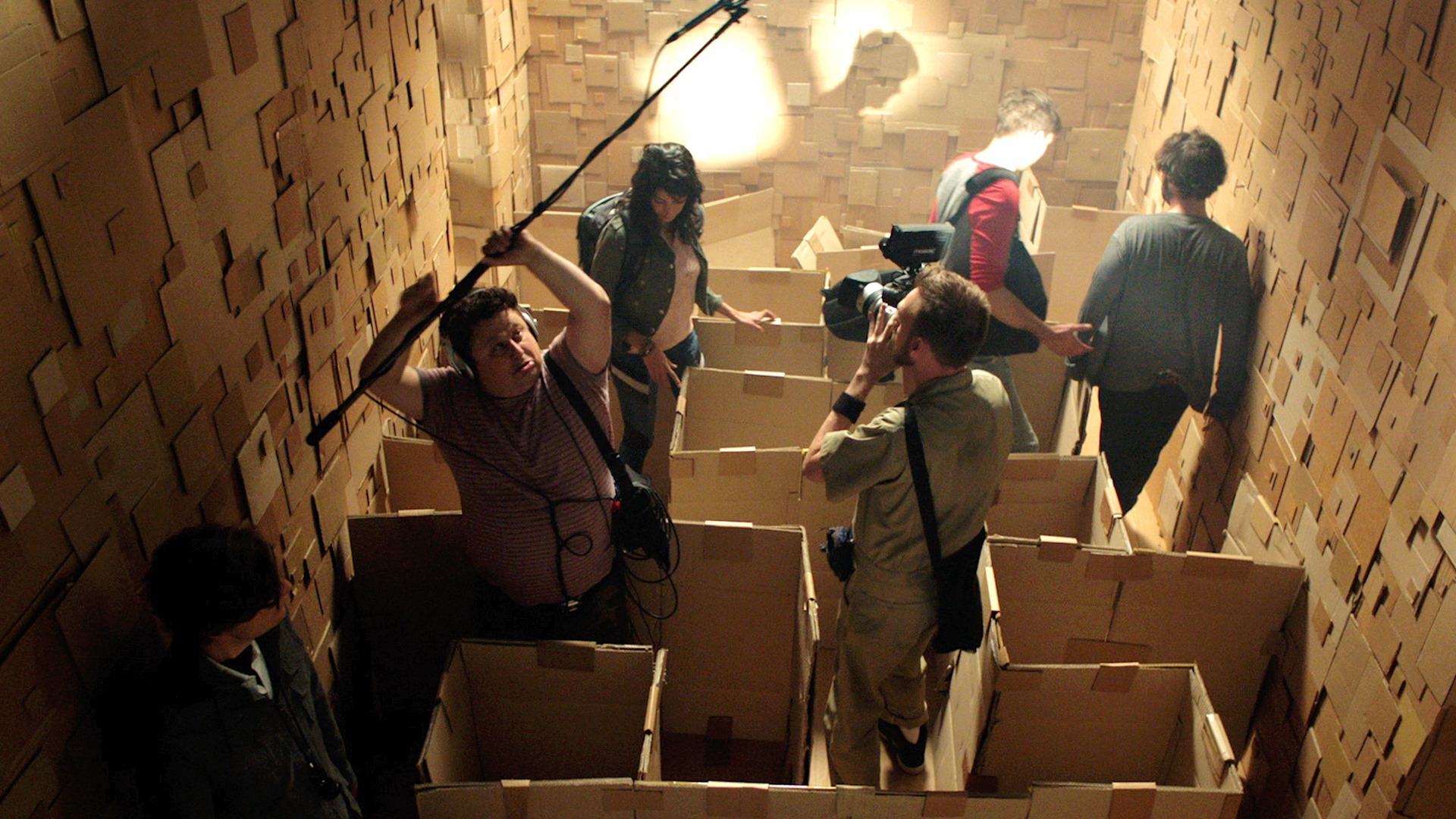
Other than the fact that you have a character in the film who’s also a filmmaker who is chronicling the journey of Dave - which already seems like an autobiographical element - the story seems very personal to you as a creative person. Could you elaborate on this?
Yeah, in two ways actually. Dave’s frustration was very much Steven’s, very much my own and I don’t wanna sound like I feel sorry for myself and complain or anything, but even now that I’ve made a film that has played in nearly fifty festivals, seven countries, and counting I don’t know where October's rent is coming from. I don’t think my life will continue to be that but I am in my forties and I’m still biting my nails, trying to monetize what I know I can do. I was in a band for years, I was an actor for years, now I’m a filmmaker, I’ve had an incredible life where I’ve done the kind of things that I used to only dream about. And I’m doing them but at a price, you know.
Again, I don’t say this to feel sorry for myself or to generate any kind of sympathy but as far as being able to tell the story of an artist who’s frustrated and says ‘Do you know what it means to be broke?’ ‘Yeah, I do.’ So I think I can direct this movie [Laughs].
And so you did.
Right, and when Steven and certainly Nick Thune [the actor playing Dave] came to meet us to discuss it, they had the same frustrations. You’re kind of on the cusp but not quite there. Is it your fault? Are you not getting the right breaks? It’s maddening but to make it even more of a crazy parallel: in early drafts of the script everyone was named after someone we knew. Dave was Steve [Sears], he was very much writing his own story. And Harry, the filmmaker, played by James Urbaniak, was Bill: very high ambitions and highly frustrated.
I ended up bringing some more of the technical set dialog to Harry’s world, not to make him an asshole, but to show that even though he’s making a terrible documentary, he still knows how sets are supposed to work and he still knows the chain of command, you know. He still focuses on things with a degree of professionalism; an ambition to be more than he is. That’s Dave’s ambition, that was my ambition and certainly it’s there in Harry. We made it more of a von Stroheim than I am in real life.
Steve was working with me as I was in community film college, taking film school classes, trying to direct, how I would shoot, edit and write and act because no one would show up for my own supremely mediocre stuff. But the ambition was always there. I think he tapped into that idea of ‘I don’t have the tools, but I do have the dreams’. And that can be beautiful and it can also be very sad.
Through Dave’s story you address a fear of failure and of putting the work out there for it to be judged. But now you have done so and the response has been tremendous. That must be very rewarding on a personal level, to have that accomplishment, but also inspirational for other creative people in that you show them: ‘it is worth taking the risk and putting it out there’.
I hope so. The thing that’s thrilled me the most about this movie beyond just actually having done it […] has been to see not only how people were able to connect to it emotionally – some very emotionally – but actually seeing people react to it by physically making things. The Chattanooga Film Festival, for example, for their opening, they built significant portions of the set, which was unbelievable. They had more space than we did. You could walk from one room into the next. I was like, man, we couldn’t even do that in our own movie [Laughs]! Here in Vienna in the Filmcasino they have a beautiful display that they were just inspired to build.
That’s creativity of your film goading on the creativity of others.
Exactly! It’s not a passive reaction. It’s not only a positive reaction but it’s an active response that’s generating art. Someone, one of the theatres – can’t think of which one and now I feel bad –, had a cardboard movie poster in their foyer but they wanted to make their own, which is great. The best part of making the movie, as stressful as it was, was walking around set and every corner of our warehouse space somebody was making something. That impulse to create can drive you mad if you’re not creating.
That’s sort of what the movie is about if you’re – I don’t wanna use the word constipated [Laughs] – but if you burn to create and you’re not creating, that’s dangerous. That’s where madness lies. But when you’re surrounded by it and everyone’s contributing – ‘we could do this’, ‘what about this?’, ‘we could use some of those’ – and there are these physical objects everywhere around you … Any one of these set pieces is a work of art and could be put on display in a gallery show: the axes with the drops of hot glue as bolts, everything is just crafted with so much care, attention and enthusiasm, you know?
And now you see that spread out over the world as a reaction.
Yeah. Other people see that and say ‘I wanna make something’. And people have said to me ‘this movie kicked my ass in gear, I’m writing again’. Or I see it on Twitter or someone will reach out through other social media: ‘thanks to this movie I’m making again’. They’re either dusting something off they were working on before or they’re inspired to start something new or just get back in touch with that spark and encourage it to grow. No one could ever ask for more than that.
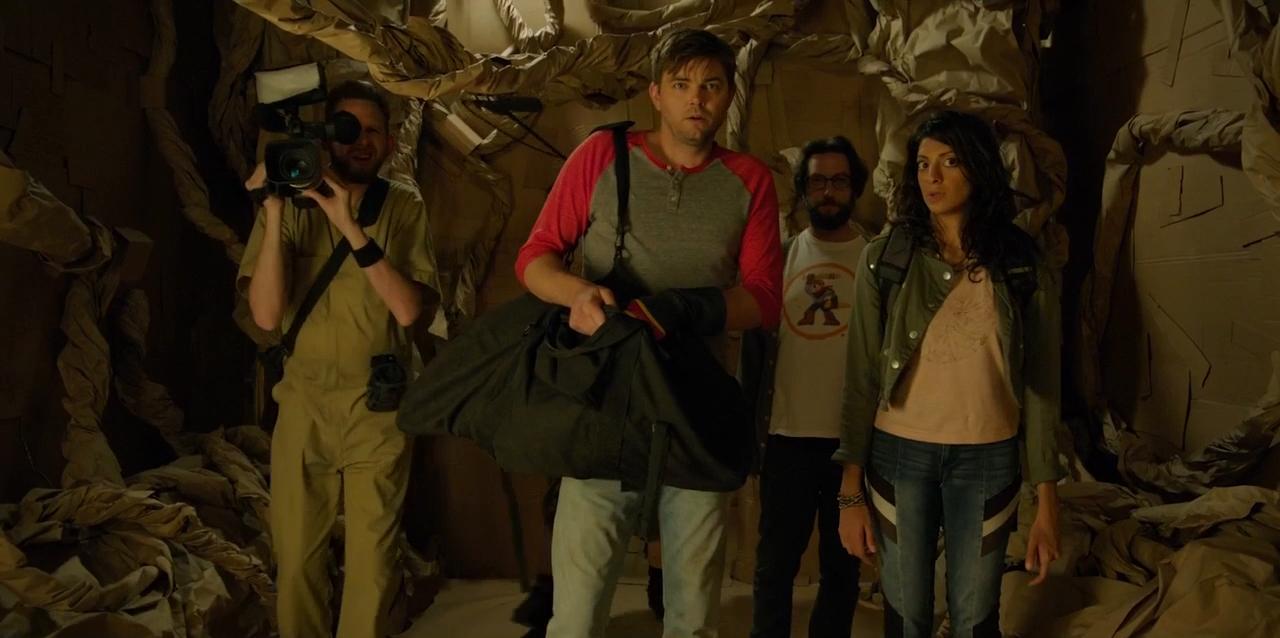
We talked about the fact that the film allows for multiple viewings and I’m pretty sure it will obtain its cult-status sooner rather than later. There’s always something additional to discover in there and you already mentioned some of those aspects but what do you hope audiences will certainly get out of the first viewing; the feeling with which they leave the movie theatre?
[Spoilers below]
I know we’re at risk of undoing what we had done with our closing credit sequence where you sort of get to see everybody again, even people who have been eliminated by the maze, let’s say. I was warned not to make light of what had happened in the film. Some people who had read the script thought that that ending made light of the film and it’s not meant to, but it is meant to be a celebratory. Even funerals and wakes: at some point you get drunk and laugh and tell stories.
The music is a celebration and even lyrically relevant, which I noticed last night here at the screening. This line “you are not alone in the city because we are all alone in the city”, it’s a celebratory line that’s positive and also really depressing. We’re all into it together, and then it kicks into the chorus and we’re partying again because what are you gonna do? [Laughs] Even the lyrics of the song sort of reflect that duality but it is a celebratory ending because he finished it all the way. It cost him some friends, it risked his relationship, it cost him personally because he had to destroy it. But he did it, and god it is so hard to say that. When you have any kind of ambition at all, it is so hard to say ‘I did it’. To get yourself to that place, to get others to go there with you, if you’re doing something collaborative. Not just want to do it, but to have done it. Regardless the cost, however pyric, there is still celebration.
There’s lots of pathos, subtext and some really sad things in the film but up and at ’em, you know? Rick & Morty has a very bleak outlook on life but ultimately, what are you gonna do? It’s Becket. ‘Can’t go on, what shall I do? I’ll go on.’ It’s brutal but just get it done, then clink the champagne ’cause you did it.
With the success of Dave Made a Maze the possibility of making your next film seems all but assured. At the Q&A you told us you have finished writing a new screenplay. What does the future hold for you as a filmmaker?
Officially all I can tell you is that the first draft is handed in and I’m a big fan. It’s not a shooting draft so it’ll take on changes as it gets developed. The next world that we’re going to explore is one I love. It’s the world of musicians. It’s gonna be just as strange and surreal, silly and sad and positive as Dave. It’s gonna be on a much bigger scale. It’s gonna be a genre picture. A big part of the international genre community, but particularly this run with Dave Made a Maze, has made me realize how much I have loved and will always love genre films.
I’m a comic book guy, I’m a Star Wars guy, I’m a Jim Henson guy. I’m wearing a Big Trouble In Little China shirt [Laughs]. I don’t have to pretend that I’m that to connect with genre. There isn’t much I don’t love but I really do wanna make genre pictures for years and years and years, and even genre television.
I also wanna stay in the world of practical effects, animation and puppetry because of that sense I was talking about earlier. You look around and it’s there: someone made it and it’s right there. That is so exciting and I wanna stay a part of this community. It’s like a rediscovery for me. Even though it’s a first film and even though it’s my first time going to these festivals - the first time I’m even meeting these people - it’s a rediscovery of all the things I love. Thankfully, I have sort of a team, if you will, that is encouraging me to stay weird.
That’s what I plan to do. World-building is my favorite thing. And if you’re gonna build a world, why not make it a weird one?
Portrait: Slash Film Festival © Mercan Sümbültepe






